Empowering the risk management process
Centrica Combined Common Investment Fund, which supports three separate pension schemes at Centrica with a combined total of £7.5 billion in assets, is at the vanguard of pension risk management and asset allocation. Indeed, the fund was recently recognized as the leading corporate pension fund above €5 Billion at the Chief Investment Officer Innovation Awards, while its own CIO, Chetan Ghosh, was named by Institutional Investor magazine as the leading UK pensions investment manager of the year.
As part of its efforts to stay at the very forefront of strategies and techniques relating to pension investment, Centrica Combined Common Investment Fund adopted PFaroe in August 2014.
Chetan Ghosh, comments:
“Since joining Centrica in 2009 I have wanted to move us away from being reliant on our consultants – instead shifting the emphasis to our in-house team making recommendations to our investment committee, which is extremely sophisticated, experienced and comfortable making important strategic decisions. We wanted to take control of our fund’s management, leveraging our trusted network of partners in the asset management and banking communities. To do this, we needed a system that we could use internally to provide consistent and timely analytics across both sides of the balance sheet; in order that we could produce insightful data on schemes assets, liabilities and risk positions. PFaroe fitted the bill and there wasn’t anything similar in the marketplace – not only does it have the in-depth functionality to cope with our sophisticated approach, it is also presented in a user-friendly format, meaning we can easily run it ourselves.”
Enabling control, consistency and cost reduction
There are two key areas where Centrica utilizes PFaroe from a measurement or reporting point of view:
Quarterly strategic investment update
Centrica uses PFaroe to feed into its quarterly strategic update, which focuses on the movement of the three schemes’ assets and liability values and models how these may develop in the short and medium-term. The fund assesses the pension schemes’ risk profiles by using a number of PFaroe’s risk lenses; particularly Value-at-Risk (VaR) interrogation, stress-testing against historic market events, and “What-if?” analysis. This allows the fund to ensure that it continues to meet the aim of matching assets and long-term liabilities while delivering necessary returns.
Actuarial valuation
The triennial actuarial valuations are major exercises – conveying the schemes’ performances to the sponsor, trustees and other key stakeholders. The asset-liability projections and downside risk considerations over one and three year periods are intensely scrutinized by the trustees and the sponsor – and feed into decisions relating to the fund’s future investment strategy.
While Centrica has long based these updates and valuations on detailed numbers and sophisticated analysis, there were concerns over inconsistent methodologies from various advisors and production timescales.
1. Control and consistency from one source of information
Previously, Centrica had received asset and risk information from its investment advisers, actuarial consultants and fund managers; yet each intermediary would base their analysis on different underlying assumption sets. For the investment team to pull these all together in a way that was digestible for the sponsor and trustees was not only time-consuming, but inefficient. Using PFaroe has allowed Centrica to model assets, liabilities and risk consistently, in a consolidated fashion, on one platform.
“A key driver of adopting PFaroe for us was to get one centralized source of risk management information. While the information we had previously was fit for purpose, it often came from different sources, based on different underlying assumption sets. Getting it all in one place with a consistency of methodology and assumptions underpinning the analytics was a key motivation for us,” comments Ghosh.
Ghosh adds:
“We were also keen to have some adviser independence on the numbers produced. If you went to one consultant they would give you one number for downside risk, while another consultant would have a different number projected over a different time-frame. We needed long-term consistency in the numbers – which is why we went down the route of using software that we had procured, rather than being beholden to advisers.”
2. Increased efficiency, reduced costs
PFaroe has also enabled this information to be produced far more efficiently. Previously, Centrica would have had to wait while advisers produced valuations or modelled certain scenarios on their own systems. This was often inefficient especially if a variation on a certain scenario was requested by the fund, which would require advisers going back to their models to recalculate a new set of numbers.
“While external providers can provide asset-liability modelling analytics and services, PFaroe has helped us to retain control over the speed with which the modelling is completed so that we can manage the whole process better,” explains Ghosh. “Given that we have significant actuarial and investment know-how internally, control over the numbers has allowed us to upscale what we were doing and break down any barriers to a streamlined asset allocation process. We have achieved all this while experiencing cost-savings.“
3. Looking through multiple lenses of risk
PFaroe has also allowed Centrica to look at risk in a number of different ways.
Ghosh explains:
“Too often the industry equates risk to a volatility number, but actually risk is multi-dimensional. It can come at you from different angles, hence why it is essential that you look at it through multiple lenses. We’ve trained our trustees in order that they understand exactly what each lens is seeking to show, and how this can be incorporated into setting future investment strategy.”
Setting the fund’s future strategy
Fundamental to Centrica’s asset allocation process is the setting of fund objectives – again an area where PFaroe has a significant role to play. The fund’s innovative approach centres on setting a liability-related investment objective, rather than focusing simply on strategic asset allocation. Specifically, the fund targets excess returns over gilts which must be achieved within permitted volatility boundaries. This leaves the investment committee with flexibility to construct asset allocation as it sees fit with a view to meeting these objectives.
These objectives are borne from the actuarial valuation process in which the trustees stress-test the schemes’ funding levels using PFaroe to determine what level of investment risk they can tolerate. Having completed this process, they will then define the parameters for the next three year period, passing the investment objectives over to the investment committee which has the license to then structure the assets as it sees fit.
“During this process, the investment team works closely with the trustees to help them work through PFaroe’s risk analytics and come to conclusions about their investment objectives,” says Ghosh. “The trustees then set headline objectives which outline the long term level of growth they want to target, over what time-frame, as well as deciding how much risk they are willing to take on and what would be too painful in terms of a downside event. We then structure the portfolio based on their objectives, using PFaroe to monitor that we maintain on the right path and report back to the trustees.”
“The advantage of this approach is that we don’t face decision paralysis,” adds Ghosh. “PFaroe allows us to converse between meetings, so that investment decisions can be made quickly. It’s crucial that we remain dynamic.”




